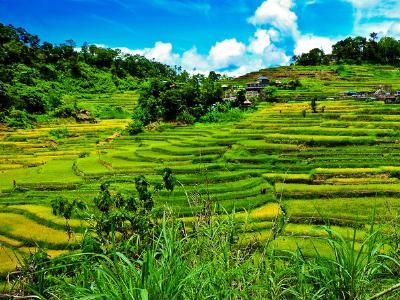Philippines gets more peso per hectare from rice breeding

Over a 25-year period, Filipino farmers have gained an additional US$52 (Php 2,300) per hectare from using improved rice varieties derived from the breeding work of the International Rice Research Institute (IRRI).
This finding came after the Australian Centre for International Agricultural Research (ACIAR) examined the benefits of investment in IRRI's plant breeding – the science behind improving rice varieties.
The study covered three major rice-producing countries in Southeast Asia – the Philippines, Indonesia, and Vietnam. IRRI works with all three countries' agricultural research and extension systems to advance its improved rice and distribute it as new varieties to local farmers.
The Philippines, a rice-eating country, has mostly small rice farms, averaging 1.7 hectares, and rice is grown across different kinds of environments.
The country briefly achieved rice self-sufficiency in the 1970s, but was set back by different factors such as its location in the typhoon belt, limited land, and high population increase in succeeding decades.
Today, the Philippine government is taking steps to achieve rice self-sufficiency, and IRRI is working closely with its Philippine partners to achieve that.
Related news
 Tay Ninh eyes hi-tech agriculture cooperation with Japan
Tay Ninh eyes hi-tech agriculture cooperation with Japan The southern province of Tay Ninh wants to cooperate with Japan in developing hi-tech and clean agriculture meeting VietGAP, Global GAP and Organic standards.
 Coffee export reaches 1.79 million tonnes in 2016
Coffee export reaches 1.79 million tonnes in 2016 Vietnam exported 1.79 million tonnes of coffee in 2016, earning 3.36 billion USD, according to the Ministry of Agriculture and Rural Development.
 Indonesian farmers earn more thanks to rice breeding
Indonesian farmers earn more thanks to rice breeding An Australian Centre for International Agricultural Research study looked at the impact and value of rice breeding work of the International Rice Research